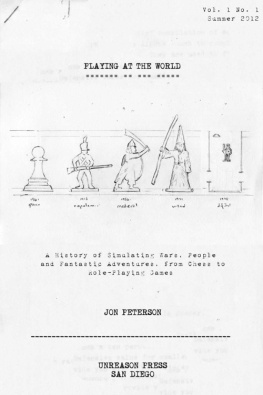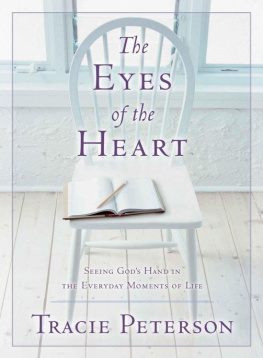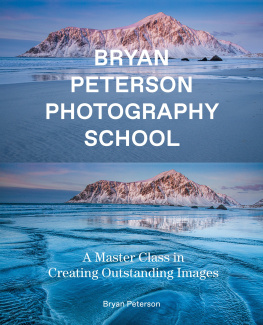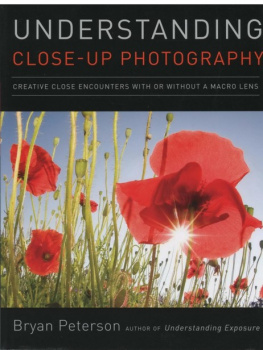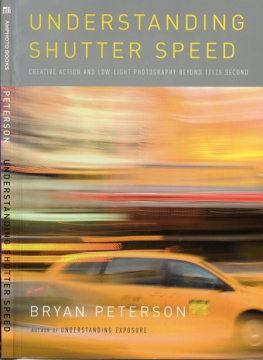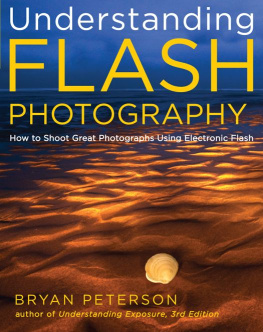
BRYAN PETERSONS
UNDERSTANDING PHOTOGRAPHY
FIELD GUIDE
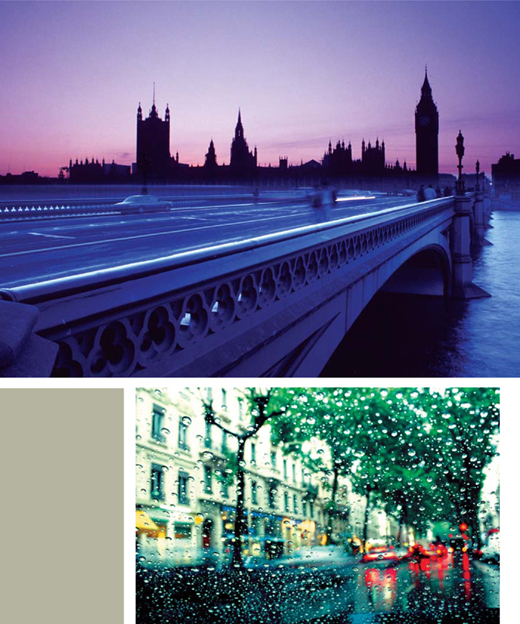
28mm lens, graduated ND filter, ISO 50, f/8 for 1 second, tungsten film (top); 3570mm lens, f/16 for 1/8 sec. (bottom).
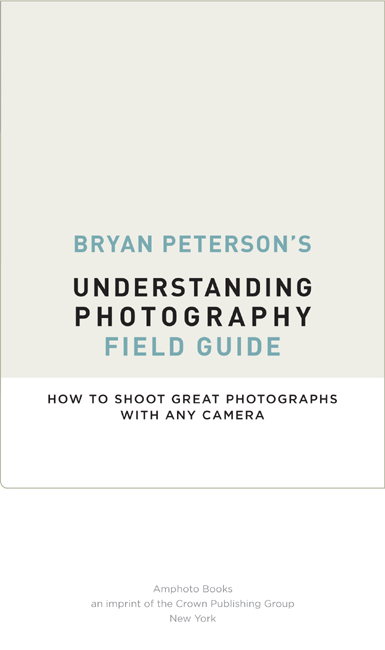
To my three publishing heroes, Victoria Craven, Julie Mazur, and Alisa Palazzo, thanks for speaking my language.
ACQUISITIONS EDITOR: Victoria Craven
PROJECT EDITOR: Alisa Palazzo
ART DIRECTOR: Jess Morphew
DESIGNER: Karla Baker
PRODUCTION MANAGER: Alyn Evans
Copyright 2009 Bryan Peterson
All rights reserved.
First published in the United States by Amphoto Books an imprint of Watson-Guptill Publications
Crown Publishing Group a division of Random House, Inc., New York
www.crownpublishing.com
www.watsonguptill.com
Portions of this material were published previously in the following best-selling Bryan Peterson books: Learning to See Creatively, Understanding Exposure, Understanding Digital Photography, Beyond Portraiture, Understanding Shutter Speed, and Understanding Close-up Photography.
Library of Congress Cataloging-in-Publication Data
Peterson, Bryan, 1952
Bryan Petersons understanding photography field guide: how to shoot great photographs with any camera. -- 1st ed.
p. cm.
Includes index.
1. Photography--Handbooks, manuals, etc. I. Title. II. Title: Understanding photography field guide.
TR146.P42356 2009
770--dc22
2008053968
eISBN: 978-0-8174-0019-4
v3.1

Nikon D2X, 1755mm lens at 17mm, f/22 for 1/15 sec.
The question is not what you look at but what you see.
Henry David Thoreau
CONTENTS
INTRODUCTION
I have yet to meet anyone who hasnt expressed at least once in their lifetime, Where did all the time go? For me, writing this field guide has been a real eye-opener in many respects, in particular in making me suddenly aware of where all the time did actually go. More than 38 years have passed since that fateful day when my oldest brother, Bill, placed a camera in my hands. If nothing else, this sudden awareness of time is proof that passion is truly the great, invisible timekeeper. I know that the calendar tells me Im 56, but it is in marked contrast to what my 18-year-old heart still feels todaythat every day is a photographic opportunity!
Back in 1970, fresh out of high school, I honestly had no plans to be a photographer. Back then, I had already made my career choice as a commercial artist and cartoonist, having begun to enjoy the success of selling my pen-and-ink landscape drawings at local arts and crafts festivals. My one and only complaint in my life back then was about the time I had to spend at each location actually drawing these images as I traveled around the Pacific Northwest in my VW van. It was Bill who suggested I borrow his camera, photograph these landscapes, make some 8 10inch prints in his darkroom, and then draw my landscapes from the photos while seated in the comfort of my own home.
With minimal instruction, I headed off and shot two rolls of black-and-white film over the next three days. A day later, with my brothers help in the darkroom, I was absolutely mesmerized by the immediacy of the photographic printand I was hooked! I bought more black-and-white film and shot everything I could for the next eight months, when I made what proved to be one of the best mistakes of my life. Reaching into a basket on the counter in a local camera store, I bought three rolls of outdated Agfachrome 35mm film, not having a clue that it was color slide film. I spent the weekend photographing, and when I showed up at my brothers darkroom, he pointed out that the film wasnt black and white but rather color slide film. I wasnt thrilled to have to make the trip to the camera store to have the film processed, but my brother convinced me that I should because you never know you might like the colors. Just how happy was I with the colors? Lets just say that over the course of these past 38 years, Ive shot 99 percent of everything in living color!
In so many ways, I feel fortunate to have been introduced to photography when it was still a manual world, since I was forced to learn the mechanics of things. In addition, I was forced to invent, to find ways to make the shot work, since my gear was also limited to one basic lens back then (a fixed 50mm F1.4). I did eventually buy a Nikkormat FTN, along with a 28mm F3.5 and a 200mm F4, but only after my brother Bill called to ask, Any chance I can get my camera gear back? Bill is, obviously, a patient and kind brother.
Back in those days, there werent a lot of how-to books on photography either, and that actually forced me once again to really learn how my camera and lenses worked. I had to unravel the mystery of exposure, of depth of field, and of depth and perspective, and I had to learn both the challenges of making a well-composed image and the need to pay attention to light. I kept journals of the f-stop, shutter speed, and lens choice of, literally, all my exposures. I also noted time of day and location. It was this journal that enabled me to go back and see exactly why some of my exposures worked and some didnt, why sometimes the depth of field was exactly as I had hoped while at other times it wasnt, and why sidelight was in fact best for textures and backlight for silhouettes.
So much has changed in the world of photography since the summer of 1970, not the least of which is the advent of the digital age. Yet it needs to be said that the more things change, the more they stay the same. Every camera is still nothing more than a lightproof box with a lens at one end and a light-sensitive device (be it film or a digital chip) at the other. The process of light entering through the lens to record an image (be it on film or digital media) is still the same. And the recorded image is still called an exposure.
I recall joking at a seminar I taught back in 1990 that I was waiting for the industry to come out with a 20400mm F2.8 zoom lens with ED glass and internal focusing. Although theres still no such lens on the market today, I can truthfully say that were a lot closer today than I would ever have imagined. Today, you can leave the house with no more than a camera and one lens and be ready for just about any subject that crosses your pathwhether it be a close-up of a butterfly, a distant brown bear, or that big ball of orange flames setting in the western sky. Due to optical advances in the zoom lens arena, zoom lenses now rival, and compete head-to-head with, the once-favored sharper single-focal-length lenses.
However, the challenge still remains: To advance your personal vision, you must really practice with, and exploit the vision of, your lenses no matter their zoom ratio or amazing sharpness. To that end, this field guide explores the subject of personal vision in great depth and promises to unleash the visionary in youregardless of technology. Whether youre using film or, like most photographers today, not bothering with film anymore and instead shooting everything digitally, it has very little impact on the one vital ingredient that separates a ho-hum image from an OMG (Oh my God!): creativity.




